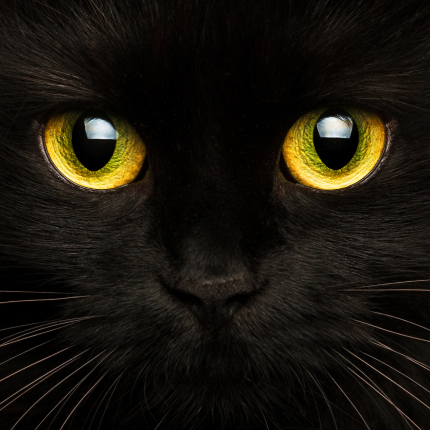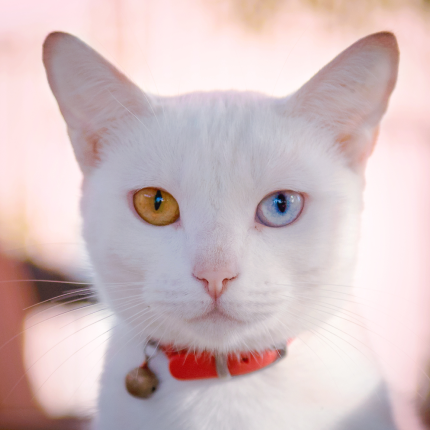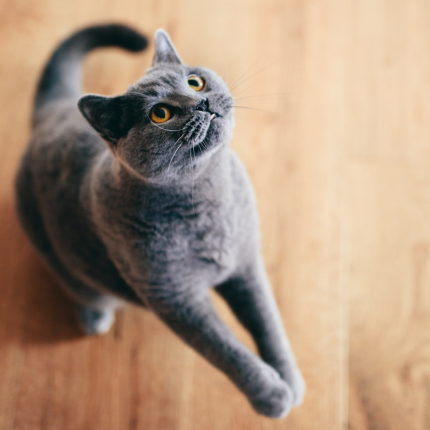Your Cat’s Not Nocturnal, She’s Crepuscular

We cat owners have all been here before. As you lay in bed, you drift off to sleep, but suddenly, your feline friend wakes you up. The problem is, it’s 3 am. You lay there exhausted, hoping that your cat would calm down. As a result, you probably think your cat is nocturnal. The truth is, they aren’t. Your cat is crepuscular. Are you not convinced? You may want to keep reading.
advertisement
Nocturnal, Diurnal, Crepuscular
Most of us are familiar with the word nocturnal; we associate this word with hooting owls, howling wolves, and musical crickets: the creatures of the night. However, animals, such as humans, who are most active during the day are called diurnal.
More specifically, nocturnal animals have adapted to thrive best when there is little to no light. For example, bats have terrible eyesight, but with the help of echolocation, they do not need vision (which is a sense that relies on light to be effective) to hunt and catch their prey. It’s unknown if nocturnal or diurnal came first — it’s theorized that nocturnal creatures became night dwellers to escape the day roamers or vice versa. But what about this third category: crepuscular?
Cats are crepuscular because they are most active at dawn and dusk (low light hours). Crepuscular animals are not limited to our feline friends. Other crepuscular animals include rabbits, ferrets, ocelots, bobcats, deer, and African wild dogs.
So what is crepuscular, and why is my cat crepuscular?
Crepuscular animals thrive when the light is low, which means the time of day they’re most active can vary depending on the amount of available light so that they may be active on a bright moonlit night or an overcast day.
Animals have adapted to be crepuscular for two reasons: to adjust when their prey is most active and to avoid competition from other animals. For example, on the Santa Cruz islands, the short-eared owl is crepuscular to avoid the prominent predator, the Galapagos hawk. However, the same owl species that live on the Galapagos Islands are active during the day.
advertisement
It’s in the eyes
Even though this behavior is instinctive to each species, the structure of an animal’s eyes determines its nocturnal, diurnal, or crepuscular behavior. Crepuscular creatures like your cat have large eyes compared to their skulls, allowing in more light compared to our smaller human eyes. They also have a layer of cells at the back of their eyes called the tapetum lucidum, which reflects light to the retina, enabling them to see very well in low light.
While this information may not help you at 3 am when your cats are keeping you awake with their crepuscular zoomies, we hope this gives you some additional insight into why it’s happening. Just remember, it’s not because they’re trying to bother you; they’re just succumbing to their primal instincts with the hunting urge kicking in, even if it’s just hunting their stuffed toy mouse.

Featured Articles

Polydactyl Cats: Just More Beans to Love
Polydactyl cats have become extremely popular in recent times. As a result, more and more people are interested in learning more about this six-toed cat and want to get one of their own. If you are a cat lover intrigued by polydactyl cats, you have come to the right place….

The Odd-Eyed Cat (AKA Heterochromia)
Cats are already beautiful and fascinating creatures, but people are bound to take notice when they have something as captivating as two different colored eyes. Odd-eyed cats always have one blue eye paired with either a green, yellow, or brown eye. This form of heterochromia occurs in other animals, including…

Greebles and Cats: The Origin and the Meaning
You may have seen an internet sensation concerning cats labeled “greebles.” Feel out of the loop? We’re here to help you. In 2019, Reddit user /user/literallyatree commented on a Reddit post about a cat that looks like it’s trying to slap a ghost. This user commented: “My family calls things…
